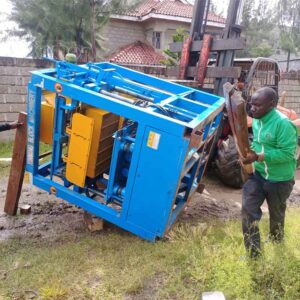
Title: **Full-Automatic Block Products in Affordable Housing: Unveiling Market Dynamics**
Introduction:
The global demand for affordable housing has fueled innovation within the construction industry, leading to the exploration of cost-effective and sustainable building materials. Full-automatic block products, known for their precision manufacturing and structural advantages, are emerging as key components in the quest for affordable and resilient housing solutions. This article delves into the market dynamics of full-automatic block products in the context of affordable housing, exploring the factors driving adoption and shaping the industry landscape.
1. **Rising Demand for Affordable Housing:**
The worldwide shortage of affordable housing has intensified the need for innovative construction solutions. Governments, NGOs, and private developers are actively seeking cost-effective and efficient building materials to address this growing demand. Full-automatic block products offer a compelling solution, providing a balance between affordability and structural integrity.
2. **Cost-Efficiency and Reduced Labor Requirements:**
One of the primary drivers of full-automatic block product adoption in affordable housing is cost-efficiency. The automated manufacturing process significantly reduces labor requirements and speeds up construction timelines. This not only lowers the overall cost of construction but also addresses the challenge of skilled labor shortages, making full-automatic blocks an attractive choice for affordable housing projects.
3. **Energy Efficiency and Sustainability:**
The emphasis on sustainability and energy efficiency in construction aligns seamlessly with the attributes of full-automatic block products. These blocks often incorporate eco-friendly materials, and their thermal insulation properties contribute to energy-efficient buildings. Affordable housing projects that prioritize sustainability find full-automatic blocks to be an appealing choice, meeting both environmental and economic objectives.
4. **Regulatory Support and Incentives:**
Government initiatives and regulatory support play a crucial role in shaping the market for full-automatic block products in affordable housing. Many countries offer incentives, subsidies, or tax breaks for projects that align with sustainability goals and utilize innovative building materials. Full-automatic block manufacturers benefit from such support, driving increased adoption in affordable housing developments.
5. **Speed of Construction and Scalability:**
Full-automatic block products enable the rapid construction of buildings, a key factor in meeting the pressing demand for affordable housing. The automated nature of the manufacturing process, coupled with the ease of assembly, accelerates project timelines. Additionally, the scalability of full-automatic block production allows for the efficient construction of large-scale affordable housing developments.
6. **Quality and Structural Integrity:**
Affordable housing projects often face the challenge of balancing cost-effectiveness with structural integrity. Full-automatic block products, manufactured with precision and uniformity, offer consistent quality. This reliability is crucial in ensuring that affordable housing units not only meet budget constraints but also provide safe and durable living spaces for residents.
7. **Innovations in Design and Aesthetics:**
Innovations in the design and aesthetics of full-automatic block products contribute to their appeal in affordable housing. Blocks with customizable finishes, colors, and textures allow for creative architectural expressions even in budget-conscious projects. This aesthetic flexibility enhances the visual appeal of affordable housing developments, contributing to community satisfaction.
8. **Market Education and Awareness:**
Despite the advantages, the market dynamics of full-automatic block products in affordable housing hinge on education and awareness. Builders, developers, and policymakers need to be informed about the benefits and applications of these blocks. Educational initiatives and awareness campaigns play a pivotal role in driving adoption and establishing full-automatic block products as a viable solution for affordable housing.
Conclusion:
The market dynamics of full-automatic block products in affordable housing reflect a convergence of economic, environmental, and regulatory factors. As the global demand for cost-effective and sustainable housing solutions continues to rise, full-automatic blocks are positioned as a transformative force in the construction industry. The successful integration of these blocks into affordable housing projects depends on a collaborative effort among manufacturers, policymakers, and the construction community to harness their full potential in addressing the pressing challenges of housing affordability.
